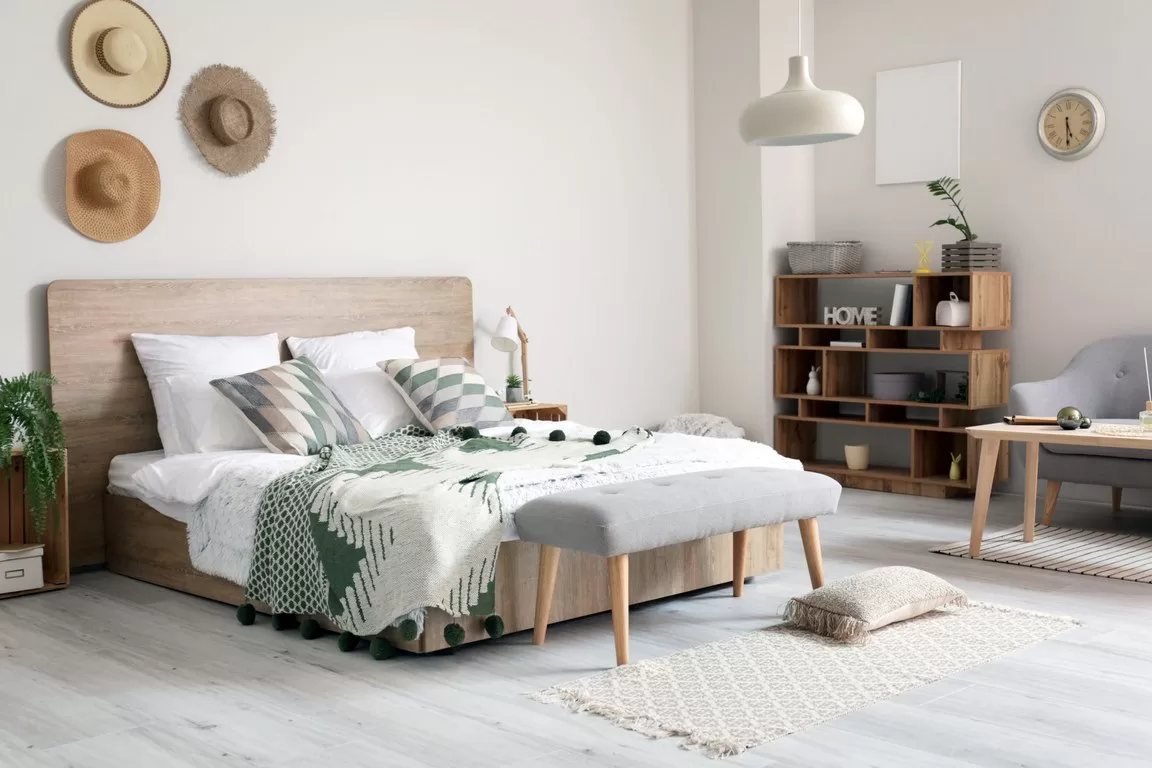Did you know that 75% of older adults experiencing insomnia symptoms and 20% of youngsters have difficulty sleeping? This statistic is alarming, and the reasons can range from physical and mental health issues to environmental factors.

While medications and lifestyle changes can help, creating a comfortable space devoted to sleep is an excellent way to start. In other words, your bedroom environment can influence how well you sleep.
Bedrooms should be a tranquil retreat and represent an oasis of calm and refreshment. If you’re tossing and turning in the middle of the night or unable to get restful nights, it might be time to rethink your bedroom setup. To make your bedroom a sleep-inducing sanctuary, here are top tips to get you started:
When was the last time you replaced your bed? Is it still providing the optimum support and comfort? According to a medical expert, unsuitable mattresses can cause headaches, back pain, and other discomforts, affecting quality sleep. This is especially true if you’ve been sleeping on the same bed for years, which eventually sags and loses its stability.
A rule of thumb is to buy a new mattress every six to eight years. However, you may need to replace it sooner or later, depending on the bed’s condition. If your current mattress isn’t up to par and won’t let you drift off to dreamland, it’s time to invest in a better one.
Look for a quality product that best suits your needs and style. Innerspring, hybrid, memory foam, and latex are all excellent options. The following are several factors to consider when shopping for a mattress:
It’s also essential to note that the price point doesn’t necessarily indicate how good the product is. There are some high-quality mattresses available at a reasonable cost. You can opt for the best queen mattress under 500 dollars or whatever works for your budget. An affordable product still offers value for your money. Choose the right option and give your body the rest it needs.
No one enjoys sweating in a hot room or shivering under a mountain of blankets. Set the air condition or thermostat to an ideal level and ensure it doesn’t fluctuate throughout the night to maintain a comfortable temperature.
Some experts recommend setting the room temperature between 60 to 72 degrees Fahrenheit (16 to 22 degrees Celsius). But this may vary depending on your preferences. If you get cold easily, set the heat a few degrees higher than the average range and vice versa. It’s about finding the correct balance—not too hot and not too cold.
The bedroom should also be well-ventilated and free from drafts. To ensure the air is circulating efficiently, open the windows to let fresh air in or turn on a fan. This idea will help keep the humidity levels low and reduce any potential allergens from building up.
Read Also:
Lighting can influence your sleep-wake cycle, and too much of it can interfere with your sleep quality. A study published by the Centers for Disease Control and Prevention (CDC) found that exposure to bright light at night can disrupt your natural circadian rhythm and affect your sleep patterns. Minimizing any light sources in your bedroom promotes a well-rested state.
To ensure a peaceful slumber, you can…
Lighting can brighten any room and make it look more inviting, but controlling them could be your go-to option for a restful night. So, consider how much light you’re emitting in your bedroom and adjust it accordingly.
Colors are believed to affect moods and emotions dramatically. How you perceive a particular shade can make a big difference in creating a relaxing atmosphere.
So, select neutral or pastel colors to set a calming tone when designing and painting your bedroom. To narrow your search, here are colors that invite sleep.
Walls aren’t only the place you can use these colors. You can integrate them into furniture, bedding, accessories, and other décor pieces. Keep it simple and avoid combining too many colors, as it may create an overwhelming and chaotic effect.
Clutter can be an eyesore and a major distraction, causing unnecessary stress or tension. A few changes might be your need to achieve a lovely bedroom. Here are tips to help you organize and tidy up this space:
Decluttering can make any room more spacious, airy, and relaxing. This approach will contribute significantly to achieving a peaceful and cozy sleep environment.
Creating a serene bedroom doesn’t have to be complicated. Implement the design ideas discussed above, and you’ll instantly transform your room into a tranquil oasis. Let your bedroom become an escape from the busy world and a place where you can enjoy some peace.